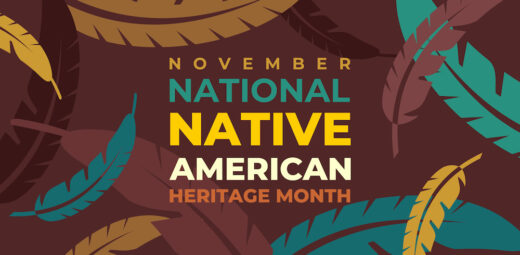
Nov 06Exploring the Rich Tapestry of Native American History
Did you know that Native people were the first homeless population in the United States? Did you also know that pow-wows are social gatherings due to displacement? Due to laws and movements such as “The Trail of Tears,” Native American tribes were forced to relocate from their homelands (in the southeast) to areas designed specifically for “Indian Territories” west of the Mississippi River.

In 1911, Dr. Arthur Caswell Parker, a Cattaraugus Seneca Indian historian, anthropologist, and author proposed establishing a day to honor Native Americans. Having founded several American Indian rights organizations, he was an early advocate for Native American people. He was at the forefront of the call for Native Americans to be given U.S. citizenship. It was the Boy Scouts of America who first designated a day to celebrate the “First Americans” (1912-1915).
Approved as a joint resolution in 1990 by then-President George W. Bush, November is Native American Heritage Month. It is a month to celebrate the many contributions and achievements of Native Americans.
“Native American History Month is a reminder that Indigenous peoples’ stories, cultures, and contributions are an integral part of our nation’s tapestry, Web Brown, Vice President of Racial, Equity, Diversity and Inclusion (REDI) explains.
The Office of Native American Programs Established
HUD created the Office of Native American Programs (ONAP) to oversee housing and community development programs benefitting American Indian and Alaska Native tribal members, tribal governments, and other Native American organizations.
Through programming and grants, ONAP has had an immediate effect on Native American communities and has contributed to positive, long-term outcomes such as:
- Increased supply of safe, affordable housing for Native American families
- Fair and abundant credit opportunities for Native American homebuyers
- Healthier economies and more opportunities for employment
Front and Center with The Denver Singers
Attendees at this year’s Mercy Housing Mountain Plains Power of Home were treated to a special performance by The Denver Singers, a Native American Drum Group made up of singers from various tribes coming together. The original singers came to Denver as a result of the Relocation Act of 1956, which forced Native American Tribes to vacate their original homelands and move to more urban areas.
The Denver Singers were created to keep their tribal culture strong while learning the culture of their new city. Along with the Denver Singers are dancers who perform social dances that honor and respect the many aspects of their past and present which were passed down through many generations.
Watch The Denver Singers Perform
5 Ways To Celebrate Native American History Month:
- Land Acknowledgement: Learn about the land you live on. It was once home to Native American Tribes.
- Enjoy Indigenous Art.
- Learn about the history of Native American people.
- Read books by Native American authors: Gordon Henry, Jessica Hernandez, and Robin Wall Kimmerer are three recommended voices.
- Watch a documentary: Native American History is part of American History. Watch We Shall Remain | American Experience | Official Site | PBS is just one documentary that shares the story of Native American people.
901 Navajo Street
Earlier this year, Mercy Housing announced their plans to build 901 Navajo – an intergenerational, permanent supportive, and affordable housing community along with a health clinic that will be the Denver Metro area’s first to focus on serving American Indian and Alaska Native (AI/AN) communities. 901 Navajo Street is expected to break ground in Summer 2024.
Learn more about 901 Navajo Street
You may also like:
- A Record-Breaking Power of Home We could not be more grateful for our community of Mercy Housing Mountain Plains supporters...
- 10 Facts About National Hispanic Heritage Month Did you know that Hispanic Heritage Month was first introduced by California Congressman George E....
Stay Up To Date
Get news on Mercy Housing and inspiring stories of change delivered to your inbox.


